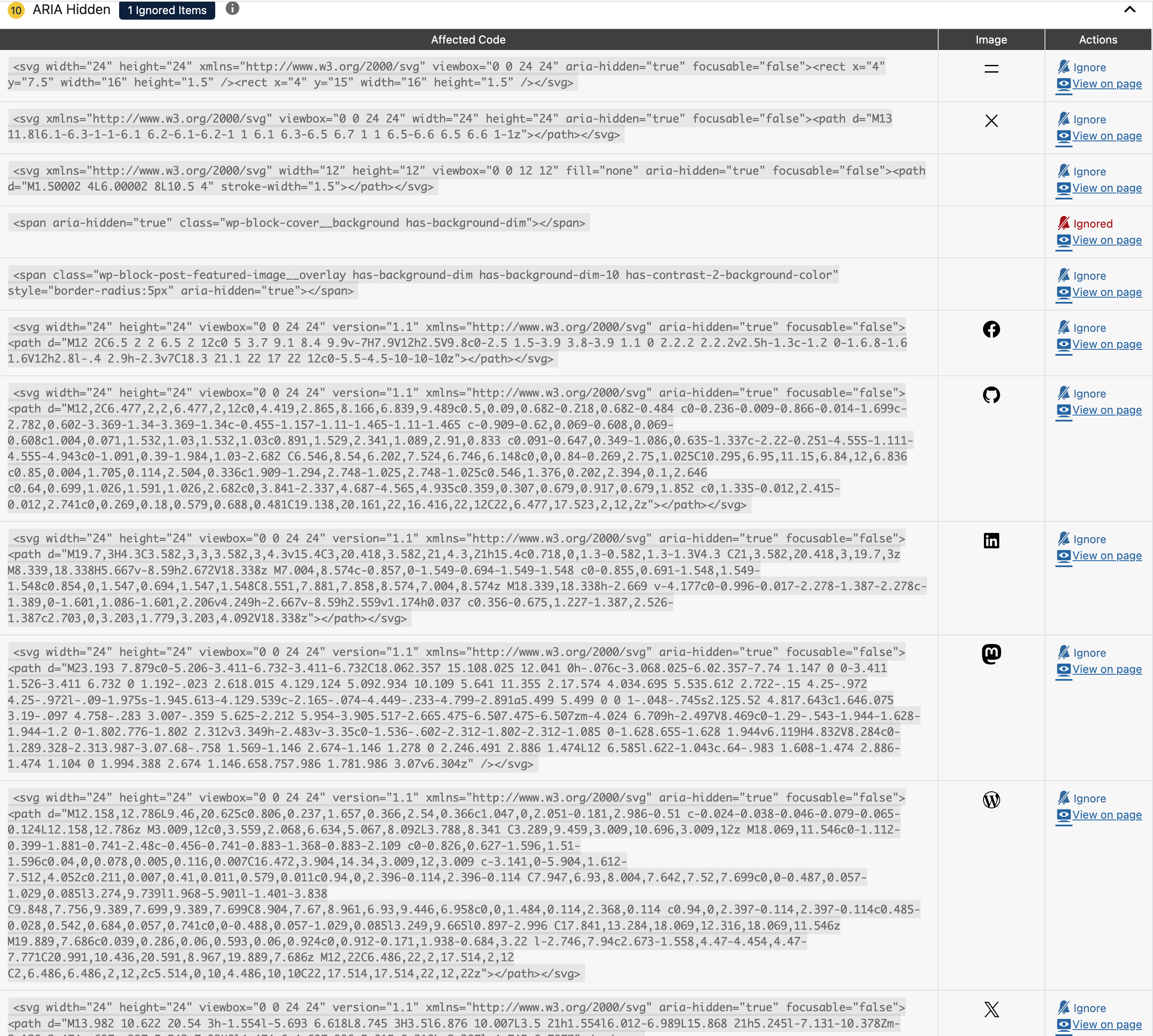
The aria-hidden warning in Accessibility Checker has led to a lot of questions since Accessibility Checker was launched. Warnings in Accessibility Checker are elements that need human assessment, and depending upon the WordPress theme or plugins used on the site, this warning could generate several issues needing manual review.
It is our goal to create the most accurate accessibility testing tool for WordPress websites and to reduce the number of manual review items so that content creators, including non-technical content creators, can publish accessible content faster.
With this goal in mind, we’re constantly refining our ruleset and the logic behind our custom WordPress accessibility checks. It’s not always about having more accessibility tests. It’s about having the best accessibility testing with minimal “noise.”
When we released Accessibility Checker version 1.10.1 earlier this month, it was a big win for better testing: the ARIA Hidden check got much smarter.
ARIA Hidden Accessibility Alert Before
Prior to Accessibility Checker 1.10.1, the ARIA hidden rule flagged warnings on every element with aria-hidden="true", with only one exception: the WordPress core spacer block was ignored.
This could result in many elements getting flagged for manual review unnecessarily. Here’s an example of what this could look like:

On this web page, there are 11 ARIA Hidden warnings. All of the social media icons and buttons for opening and closing the mobile menu were getting flagged as ARIA hidden warnings. These warnings required a person to assess them and determine if they were actually a problem.
Assessing these wasn’t hard for an accessibility specialist or developer, but it took time. For a non-technical content creator, these warnings could be confusing.
Article continued below.
Stay on top of web accessibility news and best practices.
Join our email list to get notified of changes to website accessibility laws, WordPress accessibility resources, and accessibility webinar invitations in your inbox.
ARIA Hidden Warning Now
Since the Accessibility Checker 1.10.1 release, you may have noticed that many ARIA hidden warnings that were previously flagged are now gone. 🎉
The latest version of the ARIA Hidden rule, Accessibility Checker is now doing a lot of the manual testing for you. If an element is found that has aria-hidden="true" on it, the plugin next looks to see if it is on an element within a link or button tag that has:
- Hidden screen reader only text also within the link or button tag.
- An aria-label on the link or button tag.
- Visible text within the link or button tag.
Or, if aria-hidden is on any other element that also has role="presentation".
If any of those situations return true, Accessibility Checker no longer flags an ARIA Hidden warning.
That means that if social media links and mobile navigation buttons are correctly labeled, ARIA Hidden warnings are no longer flagged.
The result of this update is:
- Fewer false positives.
- Fewer things you have to test manually.
All around, this is a big win.
Get Better Accessibility Checking on Your WordPress Site
If you haven’t updated Accessibility Checker recently, update it now and rescan your site to see the improvements from this rule.
If you have a paid version of Accessibility Checker, run a full site scan and see how it improves your numbers overall. On some websites, you might see many issues (or related ignores) disappear.
The Equalize Digital dev team continually works to improve Accessibility Checker and make WordPress accessibility testing easier and more affordable. If you haven’t tried Accessibility Checker yet, now’s a great time to start.
Install Accessibility Checker free and start finding and fixing accessibility problems today.